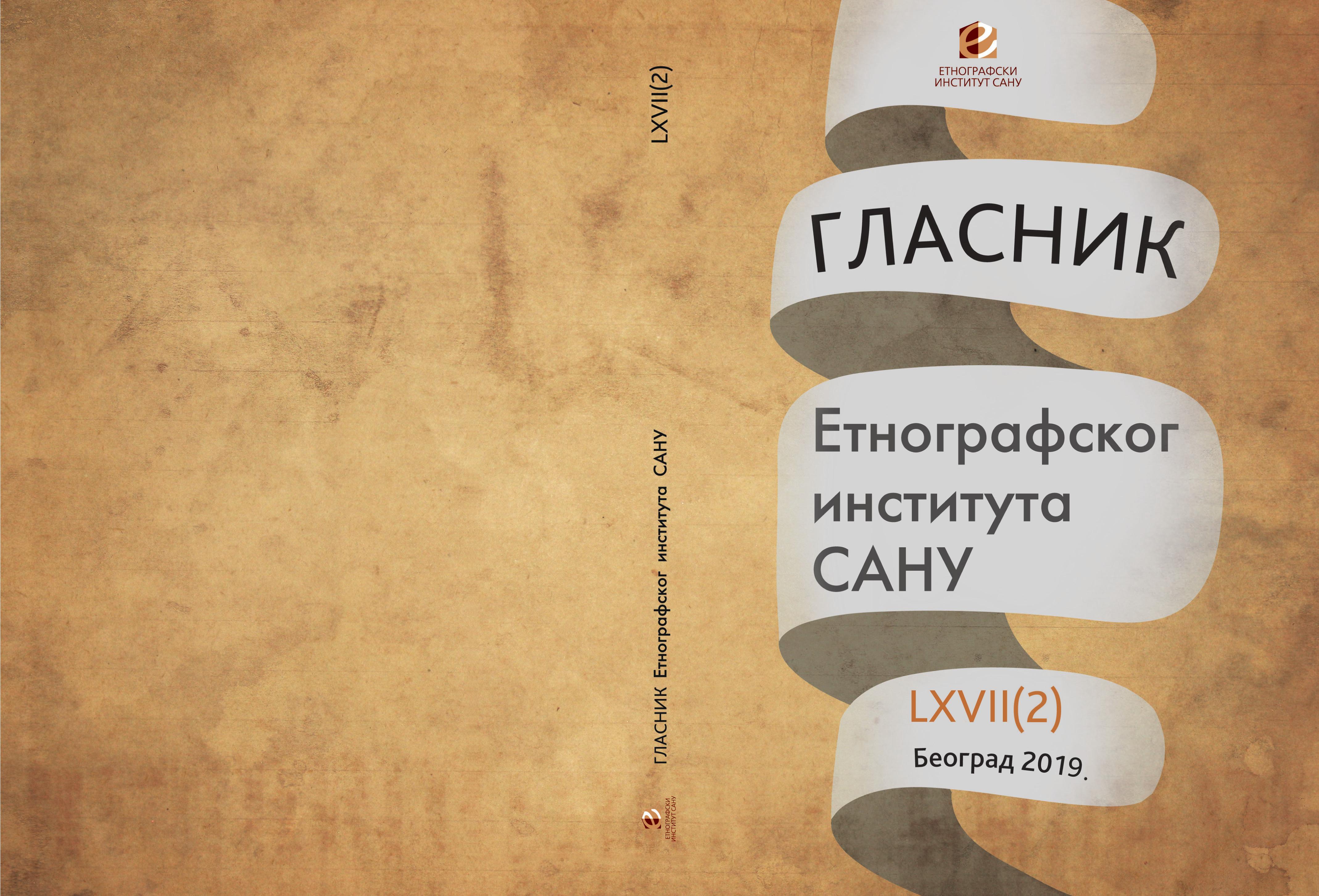Између наде и страха. Антрополошка интерпретација 'Откровења Светога Јована Богослова'
ДОИ: https://doi.org/10.2298/GEI1902445T УДК 271:39:572:821.09 Оригинални научни рад
Сажетак
На основу структуралистичких интерпретација религијских наратива, текст нуди анализу порука садржаних у Апокалипси, одређену претеристичким приступом и проматрањем вредности тих порука за изворни контекст у коме је књига писана. Анализом текста који изговарају главни ликови наратива у структурно изузетно удаљеним епизодама, успоставља се парадигматска веза која разоткрива релевантно значење и смисао Откровења. Прво се проматрају Исусова Писма упућена младим хришћанским заједницама у римској Азији са почетка текста. Потом, анализира се говор Трећег анђела који се налази у средини књиге. Напокон, сагледава се обраћање самог Бога на крају текста. Анализом формулативних исказа и метафора, анализа Апокалипсу препознаје као посланицу упућену младом религијском покрету који се налази усред процеса успостављања идентитета, али и пред несумњиво тегобним и турбулентним периодом пуним изазова за младу Цркву.
Кључне речи: друштвени притисак, идентитет, communitas, поруке, комуникација, теологија, гностицизам, култ императора, Сатана, теолошки подсетник
Reference
Bromley, David G. 1997. „Constructing Apocalypticism: Social and Cultural Elements of Radical Organization.” In Millennium, Messiahs, and Mayhem: Contemporary Apocalyptic Movements, eds. Thomas Robbins and Susan J. Palmer, 31–46. New York: Routledge.
Cohn, Norman. 1970. The Pursuit of the Millennium: Revolutionary Millenarians and Mystical Anarchists of the Middle Ages. Oxford: Oxford University Press.
Collins, Adela Yarbo. 1996. Cosmology and Eschatology in Jewish and Christian Apocalypticism. New York – Koln: E.J. Brill Leiden.
Collins, Adela Yarbo 2006. „The Book of Revelation.” In The Encyclopedia of Apocalypticism, ed. John J. Collins, 384–414. New York: The Continnum Publishing Company.
Collins, John Joseph. 1998. The Apocalyptic Imagination: An Introduction to Jewish Apocalyptic Literature. Michigan: Wm. B. Eerdmans Publishing Co.
Daglas, Meri. 2001. Čisto i opasno – Analiza pojmova prljavštine i tabua. Beograd: Biblioteka XX vek.
Davidson, Richard M. 1992. „Sanctuary Typology“. In Symposium on Revelation – Introductory and Exegetical Studies Book 1, ed. Frank B. Holbrook, 99–130. Silver Spring: Biblical Research Institute General Conference of Seventh-day Adventists.
De Silva, David A. 1992. „The Revelation to John: A Case Study in Apocalyptic Propaganda and the Maintenance of Sectarian Identity.“ Sociological Analysis 53 (4): 375–395.
Leach, Edmund & Alan D. Aycock. 1988. Strukturalističke interpretacije biblijskog mita. Zagreb: August Cesarec.
McMinn, Lisa. 2001. „Y2K: The Apocalypse, and Evangelical Christianity: The Role of Eschatological Belief in Church Responses.“ Sociology of Religion 62 (2): 205-220.
Robbins, Thomas & Susan J. Palmer, eds. 1997. Millennium, Messiahs, and Mayhem: Contemporary Apocalyptic Movements. New York: Routledge.
Paulien, Jon. 1986. „Interpreting the Seven Trumpets.“ Berien Springs: A Paper Prepared for the Daniel and Revelation Comittee of the General Conference of SDAs.
Smith, Marian W. 1950. „The Apocalypse of John.” College Art Journal, 9 (3):295–307.
Stark, Rodney & William Sims Bainbridge. 1981. „American-Born Sects: Initial Findings.“ Journal for the Scientific Study of Religion. 20 (2): 130–149.
Stefanovic, Ranko. 2002. „Finding Meaning in the Literary Patterns of Revelation.“ Journal of the Adventist Theological Society 13 (1): 27–43.
Strand, Kenneth Albert. 1976. Interpreting the Book of Revelation: Hermeneutical guidelines, with brief introduction to literary analysis. Belford: Ann Arbor Publishers.
Schussler Fiorenza, Elizabeth. 1998. The Book of Revelation – Justice and Judgment. Mineapolis: Augsburg Fortress.
Tavo, Felise. 2005. „The Structure of the Apocalypse: Re-Examining a Perennial Problem.“ Novum Testamentum 47 (1): 47–68.
Tomašević, Milan. 2016. „Moći otkrivenja: apokaliptička književnost i milenarizam.“ Etnoantropološki problemi. 11 (1): 175–192.
Tomašević, Milan. 2017. „Patmos: ni tu ni tamo. Društveno-kulturni kontekst nastanka Otkrivenja Svetoga Jovana Bogoslova.“ Glasnik Etnografskog instituta SANU 65 (2): 457–474.
Collins, John J., ed. 2006. The Encyclopedia of Apocalypticism. New York: The Continnum Publishing Company.
Turner, Victor W. 1969. The ritual process: structure and anti-structure. London: Routledge & K. Paul.
Wilson, Bryan R. 1979. „The New Religions: Some Preliminary Considerations.“ Japanese Journal of Religious Studies: 611–620.
<https://www.ei.sanu.ac.rs/index.php/gei/article/view/826>.
Датум приступа: 21 nov. 2025






